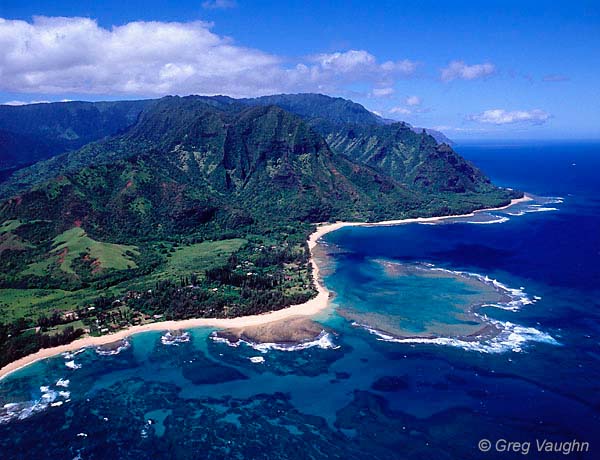 |
 |
 |
|||||
|
|
|
|
|
|
|
|
|
|
|
|||||||
Ha'ena Shoreline from the air. |
|||||||
|
"On the way to Kaua‘i, Makani-kau,
chief of the winds, god of love, crossing the channel between O‘ahu
and Kaua‘i in his wind form, saw some people in a boat chased by
a big shark. He leaped on the canoe and told the frightened people he
would play with the shark and they could stay near without worry. Then
he jumped into the sea. The shark turned over and opened its mouth to
seize him, but he climbed onto it, caught its fins, and forced it to
flee through the water. He drove it to the shore and made it fast among
the rocks. It became the great shark stone, Koa-mano, "shark
warrior," Pa‘ihulu of this century, needing to travel to Kalalau,
would come to this rock and offer prayers and food to a shark. The shark
would then carry the kahuna to Kalalau and back again."
|
||
|
|
||
|
The presence of Koa-mano by the sea at Ha‘ena reflects the importance of this transitional area between land and sea, and the importance of how these two worlds work together in Hawaiian life. By the Sea much of Hawaiian life was and is carried out. The sea provides food, transportation, relaxation, and sport. Seaside is also one of the better places at Ha‘ena for agriculture, as the rich alluvial soil at the base of Limahuli Valley provided a rich area for taro and sweet potato farming. In the subsequent chapter we will see how population densities were high in this area, now known as Ha‘ena State Park.
|
||
|
|
||








